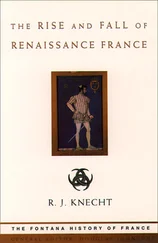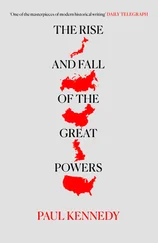Jared Diamond - The rise and fall of the third chimpanzee
Здесь есть возможность читать онлайн «Jared Diamond - The rise and fall of the third chimpanzee» весь текст электронной книги совершенно бесплатно (целиком полную версию без сокращений). В некоторых случаях можно слушать аудио, скачать через торрент в формате fb2 и присутствует краткое содержание. Год выпуска: 1991, ISBN: 1991, Издательство: RADIUS, Жанр: Биология, на английском языке. Описание произведения, (предисловие) а так же отзывы посетителей доступны на портале библиотеки ЛибКат.
- Название:The rise and fall of the third chimpanzee
- Автор:
- Издательство:RADIUS
- Жанр:
- Год:1991
- ISBN:0-09-174268-4
- Рейтинг книги:4 / 5. Голосов: 1
-
Избранное:Добавить в избранное
- Отзывы:
-
Ваша оценка:
- 80
- 1
- 2
- 3
- 4
- 5
The rise and fall of the third chimpanzee: краткое содержание, описание и аннотация
Предлагаем к чтению аннотацию, описание, краткое содержание или предисловие (зависит от того, что написал сам автор книги «The rise and fall of the third chimpanzee»). Если вы не нашли необходимую информацию о книге — напишите в комментариях, мы постараемся отыскать её.
The rise and fall of the third chimpanzee — читать онлайн бесплатно полную книгу (весь текст) целиком
Ниже представлен текст книги, разбитый по страницам. Система сохранения места последней прочитанной страницы, позволяет с удобством читать онлайн бесплатно книгу «The rise and fall of the third chimpanzee», без необходимости каждый раз заново искать на чём Вы остановились. Поставьте закладку, и сможете в любой момент перейти на страницу, на которой закончили чтение.
Интервал:
Закладка:
INDO-EUROPEAN LANGUAGES
English (I) am (he) is
Gothic im ist
Latin sum est
Greek eimi esti
Sanskrit asmi asti
Old Church Slavonic jesmi jesti
NON-INDO-EUROPEAN LANGUAGES
Finnish Oien on
Ore miyuwe miye
Not only vocabulary, but also verb and noun endings, connect Indo-European languages and set them apart from other languages.
As distinctive to Indo-European as its sounds is its word formation. Indo-European nouns and verbs have various endings that we memorize assiduously when we learn a new language. (How many of you ex-scholars of Latin can still chant amo, amas, amat, amamus, amatis, amanf?) Each such ending conveys several types of information. For example, the 'o' of 'amo' specifies first person singular present active: the lover is I, not my rival; one of me, not two of me; I am giving, not receiving, love; and I am giving it now, not yesterday. Heaven help the serenading lover who gets even a single one of those details wrong! But other languages, like Turkish, use a separate syllable or phoneme for each such type of information, while still other languages, like Vietnamese, virtually dispense with such variations of word form.
Given all these resemblances among Indo-European languages, how could the differences among them have arisen? A clue is that any language whose written documents span many centuries can be seen to change with time. For example, modern English-speakers find eighteenth-century English quaint but completely understandable; we can read Shakespeare (1564–1616), though we need notes to explain many of his words; but Old English texts, such as the poem Beowulf (circa 700–750 AD), are virtually a foreign language to us. A good example of how English has changed over the last 1,000 years is provided by the Twenty-Third Psalm:
MODERN (1989)
The Lord is my shepherd, I lack nothing. He lets me lie down in green pastures. He leads me to still waters.
KING JAMES BIBLE (l6ll)
The Lord is my shepherd, I shall not want. He maketh me to lie down in green pastures. He leadeth me beside the still waters.
MIDDLE ENGLISH (1100–1500)
Our Lord gouerneth me, and nothyng shal defailen to me. In the sted of pasture he sett me ther. He norissed me upon water of fyllyng.
OLD ENGLISH (800-1066)
Drihten me raet, ne byth me nanes godes wan. And he me geset on swythe good feohland. And fedde me be waetera stathum.
As speakers of one original language spread into different areas with limited contact, the independent changes of words and pronunciation in each area inevitably lead to different dialects, such as those that have arisen in different parts of the US in the few centuries since permanent English settlement began in 1607. With the passing of more centuries, dialects diverge to the point where their speakers can no longer understand each other and they now rank as distinct languages. One of the best documented examples of this process is the development of the Romance languages after the break-up of Latin around 500 AD. Surviving written texts from the Eighth Century onwards show us how the languages of France, Italy, Spain, Portugal, and Rumania gradually diverged from Latin—and from each other.
The derivation of the modern Romance languages from Latin thus illustrates how groups of related languages develop from a shared ancestral tongue. Even if we had no surviving Latin texts, we could still reconstruct much of the Latin mother tongue by comparing traits in its daughter languages today. In the same way, one can reconstruct a family tree of all the Indo-European language branches, based partly on ancient texts and partly on inferences. Hence language evolution proceeds by descent and divergence, just as Darwin demonstrated for biological evolution. In their languages as well as their skeletons, modern Englishmen and Australians, who began to diverge with the colonization of Australia in 1788, are much more similar to each other than either are to the Chinese, from whom they diverged tens of thousands of years ago. Given time, the languages within any part of the world will keep on diverging, held back only by contacts between adjacent peoples. An example of the result is New Guinea, which had never been unified politically before European colonization, and where nearly one thousand mutually unintelligible languages—including dozens with no known relation to each other or to any other language in the world—are now spoken in an area the size of Texas. Thus, wherever you find the same language or related languages spoken over a wide area, you know that the clock of language evolution must have been restarted recently. That is, one language must have recently spread, eliminated other languages, and then started to differentiate all over again. Such a process accounts for the close similarities among southern Africa's Bantu languages, and among Austronesian languages of Southeast Asia and the Pacific.
The Romance languages again provide our best documented example. As of 500 BC, Latin was confined to a small area around Rome and was only one of many languages spoken in Italy. The expansion of Latin-speaking Romans eradicated all those other languages of Italy, then eradicated entire branches of the Indo-European family elsewhere in Europe, like the continental Celtic languages. These sister branches were so thoroughly replaced by Latin that we know each of them only by scattered words, names, and inscriptions. With the subsequent overseas expansion of Spanish and Portuguese after 1492, the language spoken initially by a few hundred thousand Romans trampled hundreds of other languages out of existence, as it gave rise to the Romance languages spoken by half a billion people today.
If the Indo-European language family as a whole constituted a similar steamroller, we might expect to find its trampled debris in the form of older non-Indo-European languages surviving here and there. The sole such vestige surviving in Western Europe today is the Basque language of Spain, without known relations to any other language in the world. (The remaining non-Indo-European languages of modern Europe—Hungarian, Finnish, Estonian, and possibly Lapp—are relatively recent invaders of Europe from the east.) However, there were other languages that were spoken in Europe until Roman times, and of which enough words or inscriptions have been preserved to identify them as non-Indo-European. The most extensively preserved of these vanished tongues is the mysterious Etruscan language of northwest Italy, for which we have a 281-line text written on a roll of linen that somehow ended up in Egypt as wrapping for a mummy. All such vanished non-Indo-European languages were part of the debris left from the Indo-European expansion. Still more linguistic debris was swept up into the surviving Indo-European languages themselves. To understand how linguists can recognize such debris, imagine that you, as a freshly arrived visitor from outer space, were given one book each, written in English by an Englishman, an American, and an Australian, about his or her country. The language and most of the words in all three books would be the same. But if you compared the American book with the one about England, the American book would contain many place names that were obviously foreign to the basic language of the books—names like Massachusetts, Winnepesaukee, and Mississippi. The Australian book would contain more place names equally foreign to the language but unlike the American names—such as Woonarra, Goondiwindi, and Murrumbidgee. You might guess that English immigrants coming to America and Australia encountered natives who spoke different languages, and from whom the immigrants picked up names for local places and things. You would even be able to infer something about the words and sounds of those unknown native languages. We actually know the native American and Australian languages from which those borrowings took place, and we can confirm that your indirect inferences from the borrowed words alone would have been correct.
Читать дальшеИнтервал:
Закладка:
Похожие книги на «The rise and fall of the third chimpanzee»
Представляем Вашему вниманию похожие книги на «The rise and fall of the third chimpanzee» списком для выбора. Мы отобрали схожую по названию и смыслу литературу в надежде предоставить читателям больше вариантов отыскать новые, интересные, ещё непрочитанные произведения.
Обсуждение, отзывы о книге «The rise and fall of the third chimpanzee» и просто собственные мнения читателей. Оставьте ваши комментарии, напишите, что Вы думаете о произведении, его смысле или главных героях. Укажите что конкретно понравилось, а что нет, и почему Вы так считаете.












